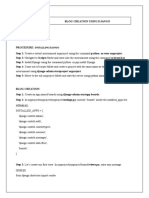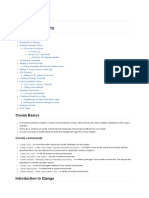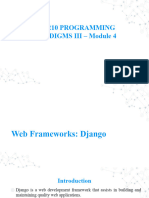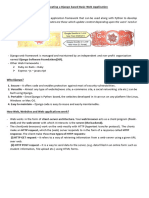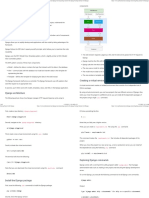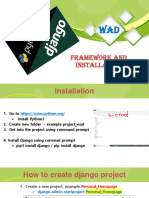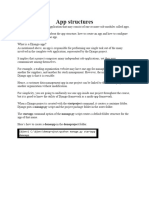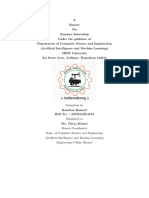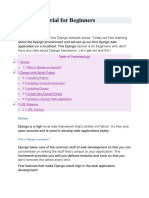0% found this document useful (0 votes)
5 views2 pagesWeb Dev Using Django
This document provides a step-by-step guide on creating a web development project using Django in Python. It covers installation, project creation, running a development server, creating an app, and setting up views and URLs. Key commands for each step are also summarized for quick reference.
Uploaded by
Anurag kumarCopyright
© © All Rights Reserved
We take content rights seriously. If you suspect this is your content, claim it here.
Available Formats
Download as DOCX, PDF, TXT or read online on Scribd
0% found this document useful (0 votes)
5 views2 pagesWeb Dev Using Django
This document provides a step-by-step guide on creating a web development project using Django in Python. It covers installation, project creation, running a development server, creating an app, and setting up views and URLs. Key commands for each step are also summarized for quick reference.
Uploaded by
Anurag kumarCopyright
© © All Rights Reserved
We take content rights seriously. If you suspect this is your content, claim it here.
Available Formats
Download as DOCX, PDF, TXT or read online on Scribd
/ 2

